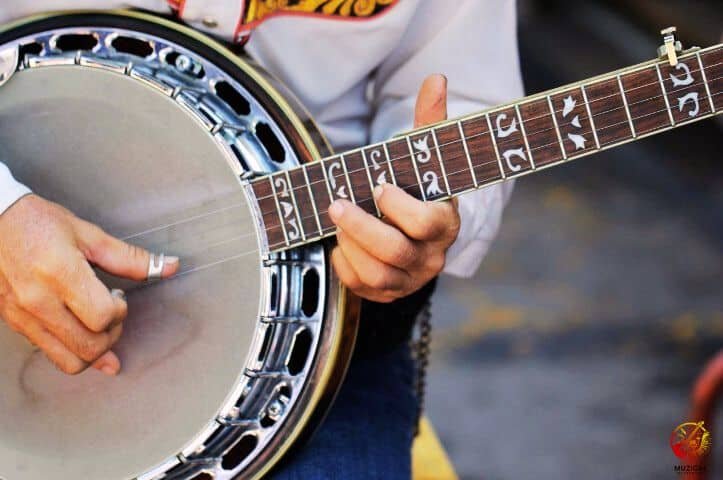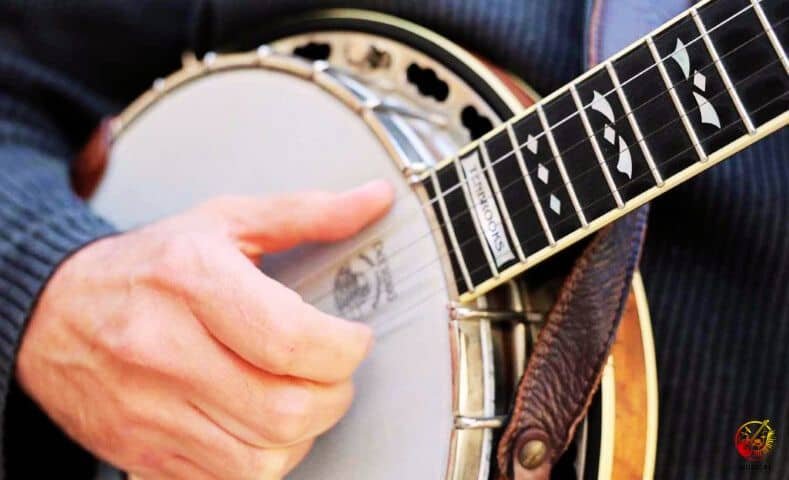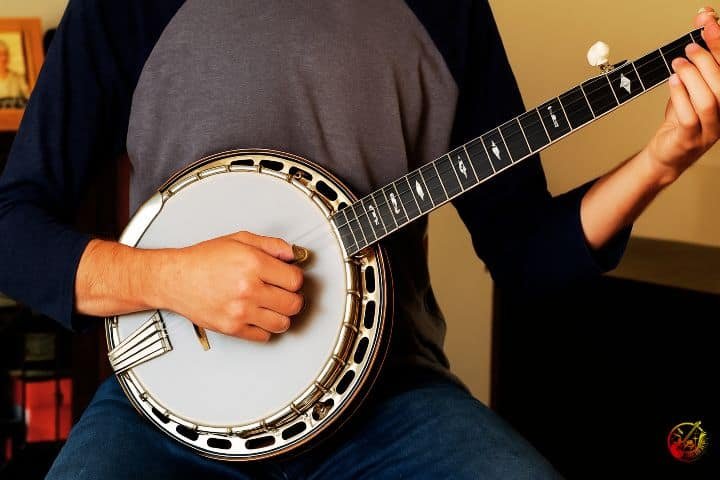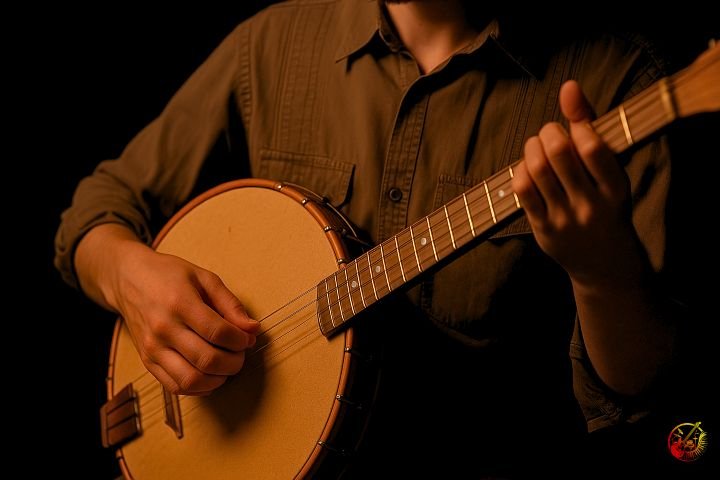Bluegrass vs Clawhammer Banjo: Which Path Will Your Five Strings Take?
Bluegrass vs Clawhammer Banjo is one of the oldest debates in the banjo world. These two styles may share the same instrument, but the way you play them, the sound they create, and even the culture around them are worlds apart.
If you’ve ever picked up a banjo, you’ve probably heard the rolling drive of bluegrass or the rhythmic “bum-ditty” of clawhammer. Both styles can be exciting to learn, but they suit very different goals.
Here, you’ll see exactly how they differ, why they developed, and which might be the best starting point for you. We’ll also touch on whether you can mix the two, and what that might sound like.
By the end, you’ll not only understand the key differences between bluegrass and clawhammer Banjo but also have the confidence to choose a style or even blend them into something new.
What Makes Bluegrass vs Clawhammer Banjo So Different?
The clearest difference between these styles is in how your picking hand works. In bluegrass, you use the three finger style thumb, index, and middle often with fingerpicks on a resonator banjo. Your fingers pick upward, creating fast, flowing rolls. The sound is bright, sharp, and perfect for cutting through a band mix. Bluegrass players often focus on speed, clarity, and driving rhythm.


Clawhammer works the opposite way. Your hand forms a loose claw shape. You strike down with the back of your fingernail, then pluck the fifth string with your thumb in a ‘bum-ditty‘ pattern. Most clawhammer players use an open back banjo, giving the tone a warm, old-time feel. Instead of sharp rolls, you get a steady, rhythmic groove.
Bluegrass fits well in ensembles, while clawhammer often shines solo or in small groups. You might think of bluegrass as a sports car fast and attention grabbing and clawhammer as a vintage truck steady, strong, and built for the long haul.
Pro Tip: If you’re testing both styles, try a simple tune like “Boil Them Cabbage Down” in each method. The difference will jump out instantly.
Why Did Bluegrass vs Clawhammer Banjo Emerge?
Clawhammer is the older of the two, with roots tracing back to West Africa. Enslaved Africans brought the banjo’s ancestor to America, and the down picking technique became part of Appalachian folk music. By the 19th century, clawhammer was common in minstrel shows and rural dances.
Bluegrass came much later. In the 1940s, Bill Monroe and his Blue Grass Boys added banjo to their lineup. But it was Earl Scruggs who transformed the instrument with his three finger picking style. His technique gave the banjo more speed, precision, and power perfect for the fast tempos of bluegrass music.


While clawhammer stayed tied to old-time traditions, bluegrass grew into a modern performance style. Clawhammer connected communities through front-porch playing and dance tunes. Bluegrass became a stage show, with players trading lightning fast solos.
Even today, the two styles carry their history in their sound. When you hear clawhammer, you’re listening to centuries old rhythms. When you hear bluegrass, you’re hearing the energy of a mid 20th century musical revolution.
Which Banjo Is Best for Bluegrass vs Clawhammer?
The type of banjo you choose plays a big role in how each style sounds and feels. For bluegrass, most players use a resonator banjo. The resonator is a wooden back plate that projects the sound forward, making it louder and crisper. This helps the banjo cut through other instruments like fiddles, mandolins, and upright bass in a band setting. Resonator banjos also tend to be heavier and more expensive, but they deliver the volume and tone that bluegrass demands.
Clawhammer players usually prefer open back banjos. Without the resonator, the sound is softer, rounder, and less piercing. This fits the relaxed, rhythmic flow of old-time tunes. Open back banjos are lighter and often cheaper, making them easier to carry to informal jams or porch sessions.
That said, there’s no rule that forces you into one type. Some bluegrass players experiment on open backs for a warmer tone, and a few clawhammer players use resonators for extra punch.
| Feature | Bluegrass Banjo (Resonator) | Clawhammer Banjo (Open-Back) |
|---|---|---|
| Weight | Heavier | Lighter |
| Volume | Loud, projects forward | Softer, mellower |
| Common Use | Band performances | Solo or small group playing |
| Price Range | Higher | Lower to mid-range |
Expert Insight: If you’re unsure which to buy, start with an open back. You can learn both styles on it, and you won’t struggle with extra weight in the early stages.
Can You Play Both Bluegrass and Clawhammer?
Yes, you absolutely can. Many banjo players explore both styles over time. The skills you learn in one can actually help you in the other. For example, the finger strength you build in bluegrass can make clawhammer’s downstrokes more consistent. Likewise, clawhammer’s rhythmic discipline can improve your timing in bluegrass.
Switching styles does take practice because the hand movements are so different. In bluegrass, your fingers pick upward in rolls, while in clawhammer your hand moves down in a striking motion. This means your muscle memory for one style won’t automatically transfer to the other.
Some modern players, like Béla Fleck and Tony Trischka, experiment with hybrid approaches blending clawhammer rhythms into bluegrass arrangements, or adding three finger rolls to old time tunes. This creates fresh sounds that don’t fully belong to either tradition.
Pro Tip: If you want to learn both, dedicate separate practice sessions. Mixing them in the same sitting at the start can cause confusion in your muscle memory. Once you’re more experienced, you can experiment with combining them in a single tune.
Which Style Is Easier for Beginners?
The answer depends on your goals and background. Clawhammer is often considered easier for complete beginners because the motion is more relaxed. The “bum-ditty” rhythm gives you a built in groove, and you can play simple melodies without worrying about fingerpicks or speed.
Bluegrass, on the other hand, demands more precise right hand coordination early on. The three finger rolls can feel awkward until your muscles adapt. You’ll also need to work on speed if you want to keep up with other bluegrass musicians.
However, if you’re coming from guitar, especially fingerpicking styles, bluegrass might feel more natural. If you’ve never played a string instrument before, clawhammer could be a gentler introduction.
| Factor | Clawhammer | Bluegrass |
|---|---|---|
| Right-Hand Motion | Downstroke with thumb pluck | Upward fingerpicking rolls |
| Speed Requirement | Low to moderate | High |
| Tone | Warm, mellow | Bright, sharp |
| Learning Curve | Gradual | Steeper at the start |
Expert Insight: If you only want to play for personal enjoyment, clawhammer is a friendly place to start. If you plan to join a bluegrass jam, start learning rolls right away.
How Does the Music Feel Different?
This is where the soul of Bluegrass vs Clawhammer Banjo comes out. Bluegrass is often driving and high energy, with songs pushing tempos of 120 beats per minute or faster. The banjo is usually featured as a lead instrument, taking solos and playing intricate fills between vocal lines. It’s music that keeps your foot tapping and your attention locked in.
Clawhammer music is about groove and pulse. The steady bum-ditty pattern creates a hypnotic rhythm that supports the melody. In many old-time ensembles, the banjo blends into the overall sound rather than standing out. The feel is more communal like a group of friends playing on a porch, rather than a band performing on a stage.
A good analogy:
- Bluegrass is like a sprint quick, focused, and designed to grab attention.
- Clawhammer is like a steady hike relaxed, consistent, and about the journey rather than the finish line.
Pro Tip: When you listen to each style, pay attention not just to the notes but to the space between them. Bluegrass fills the gaps with extra notes and runs. Clawhammer lets the rhythm breathe.
Final Thoughts
Bluegrass vs Clawhammer Banjo isn’t about which is “better” it’s about which fits your personality, goals, and playing environment. Bluegrass offers speed, power, and precision, perfect for standing out in a band. Clawhammer delivers warmth, groove, and history, ideal for solo playing or old-time sessions.
If you’re still unsure, start with one style for at least a few months, then try the other. You might find one becomes your main focus, or you may blend them into a unique voice.
Whether you’re chasing the bright rolls of Earl Scruggs or the earthy rhythms of Appalachian folk, the banjo gives you room to explore. Pick your style, commit to the practice, and let your playing tell its own story.
FAQ: Bluegrass vs Clawhammer
1. Which style is more modern, Bluegrass or Clawhammer?
Bluegrass is newer and often louder, faster, and more complex; clawhammer is older, simpler, and rooted in old-time tradition.
2. Do both styles use the same right-hand picking motion?
No. Bluegrass uses an up-picking motion with three fingerpicks. Clawhammer uses a downward stroke with a nail and thumb in a “bum-ditty” rhythm.
3. Is Bluegrass always played on a resonator banjo?
Typically yes, resonators give Bluegrass its punch.
4. Can Alan Clawhammer be played on resonator banjos as well?
Yes, Clawhammer works on resonator banjos too. It’s a playing method, not tied to one instrument type.
5. Which style came first historically?
Clawhammer (also called frailing) has older roots in African-American and Appalachian music. Bluegrass grew in the 1940s thanks to Earl Scruggs and Bill Monroe.
6. Is one style harder to learn than the other?
It depends on your approach. Clawhammer may feel easier at first. Bluegrass can be smoother if taught using a melody-first method like thumb-pinch rolls.
7. Are there players who blend both styles?
Yes. Some artists like Béla Fleck and Abigail Washburn mix techniques. Mark Johnson developed “Clawgrass,” blending both into a hybrid form.
8. Will learning one style help with the other?
To some degree. Bluegrass builds finger strength and speed. Clawhammer teaches timing and rhythm discipline. Still, each needs focused practice.
9. Is there a thumb technique common in both styles?
Not really. Bluegrass uses upward thumb motion in rolls. Clawhammer uses a downward “bum” note plus thumb flicks classic “bum-ditty.”
